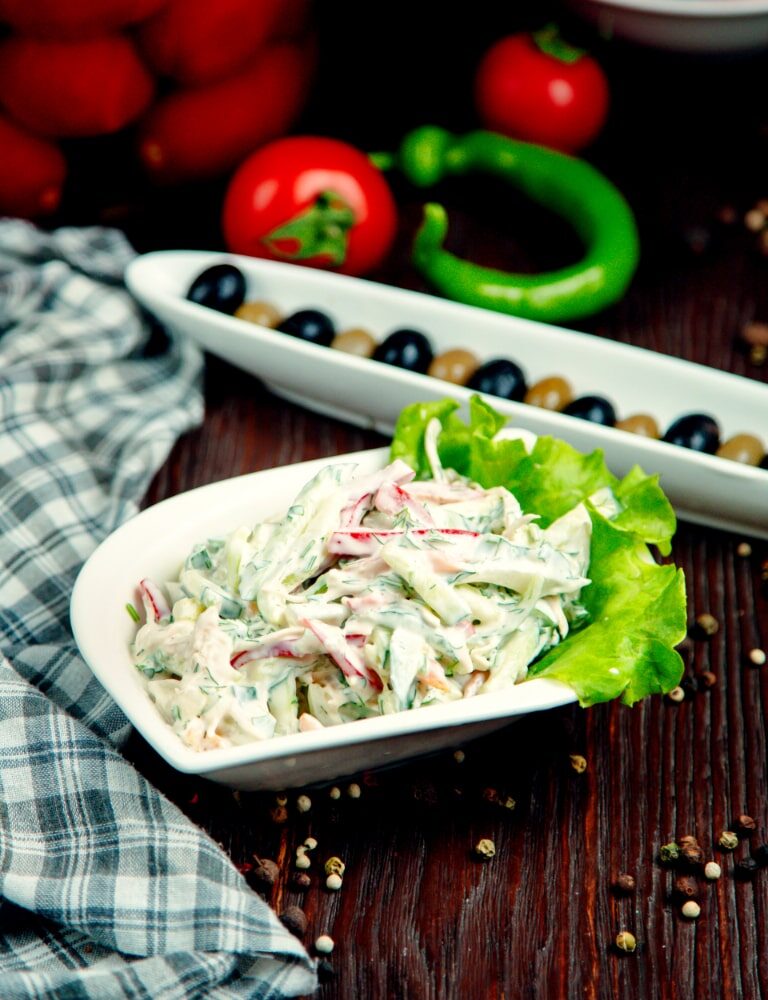The Caesar dressing recipe is a timeless classic, bringing together bold flavors to elevate any Caesar salad. Made with fresh ingredients like garlic, lemon juice, and Parmesan cheese, this homemade Caesar salad dressing offers the perfect balance of creamy, tangy, and savory notes. Whether you’re preparing a classic Caesar salad or looking for a versatile dressing for vegetables or chicken, this easy caesar dressing is a go-to recipe for every home cook. Making your own caesar dressing is simple and ensures a fresh, authentic taste, far better than store-bought options. Once you try this homemade caesar dressing, you’ll never go back to bottled versions!
Ingredient Notes and Substitutions
- 1-Anchovies: Traditional Caesar salad dressing contains anchovies, which add a salty, umami flavor. If you’re hesitant about anchovies, you can substitute with Worcestershire sauce, which has a similar taste without the fishy flavor.
- 2-Parmesan Cheese: Freshly grated Parmesan adds a sharp, nutty flavor. You can use pre-grated cheese, but fresh always tastes better. For a dairy-free option, try nutritional yeast, which provides a similar flavor profile.
- 3-Egg Yolks: Raw egg yolks give the dressing its creamy texture. If you’re concerned about using raw eggs, use pasteurized eggs or substitute with 1 tablespoon of mayonnaise for each egg yolk.
- 4-Olive Oil: Extra virgin olive oil is best for a rich, smooth dressing. If you prefer a lighter taste, you can mix olive oil with a neutral oil like canola.
- 5-Garlic and Lemon: Fresh garlic and lemon juice are key to the dressing’s zesty, tangy flavor. You can adjust the garlic and lemon to taste or even use garlic powder if you’re short on fresh ingredients.
Step-by-Step Directions
- 1-Prepare the Anchovies and Garlic: Finely mince 2 anchovy fillets and 1 clove of garlic until they form a paste. If you’re skipping anchovies, use 1 teaspoon of Worcestershire sauce instead. The garlic and anchovy mixture will create the umami base of your dressing, which gives it a rich depth of flavor.
- 2-Whisk in the Egg Yolks and Mustard: In a medium bowl, whisk together 2 raw egg yolks and 1 teaspoon Dijon mustard. This will help emulsify the dressing, making it thick and creamy. If you’re substituting with mayonnaise, add 2 tablespoons at this stage for the same effect.
- 3-Add Lemon Juice and Parmesan: Slowly whisk in 2 tablespoons of freshly squeezed lemon juice and ¼ cup grated Parmesan cheese. This step brings the tanginess and sharpness that defines caesar salad dressing. Adjust the lemon juice depending on how zesty you want your dressing.
- 4-Drizzle in the Olive Oil: Gradually pour in ½ cup extra virgin olive oil while continuously whisking the mixture. This is crucial for achieving the creamy consistency of traditional caesar salad dressing. The slower you add the oil, the smoother your dressing will be.
- 5-Season with Salt, Pepper, and Optional Worcestershire: Add salt and freshly cracked black pepper to taste. For an extra layer of flavor, whisk in a dash of Worcestershire sauce if you haven’t used anchovies. This adds a subtle sweetness and complexity to the recipe.
- 6-Let it Rest and Serve: Once fully combined, let the homemade caesar dressing rest in the fridge for about 30 minutes to allow the flavors to meld. Serve with your favorite salad or as a dip for veggies and chicken. This dressing pairs perfectly with a classic Caesar salad or wraps!
Pro Tips
- For a smoother texture, use a blender or food processor instead of whisking by hand.
- Always taste and adjust the seasoning, especially the garlic and lemon, to suit your preference.
- For a thicker dressing, add an extra egg yolk or use a bit of mayonnaise.
- Store leftover dressing in an airtight container in the fridge for up to 3 days.

Caesar Dressing Recipe
Description
A creamy, zesty, and savory homemade Caesar dressing recipe that elevates any salad to restaurant-quality perfection.
Ingredient
- Amount Per Serving
- Calories 180kcal
- % Daily Value *
- Total Fat 18g28%
- Sodium 320mg14%
- Total Carbohydrate 2g1%
- Protein 3g6%
* Percent Daily Values are based on a 2,000 calorie diet. Your daily value may be higher or lower depending on your calorie needs.

